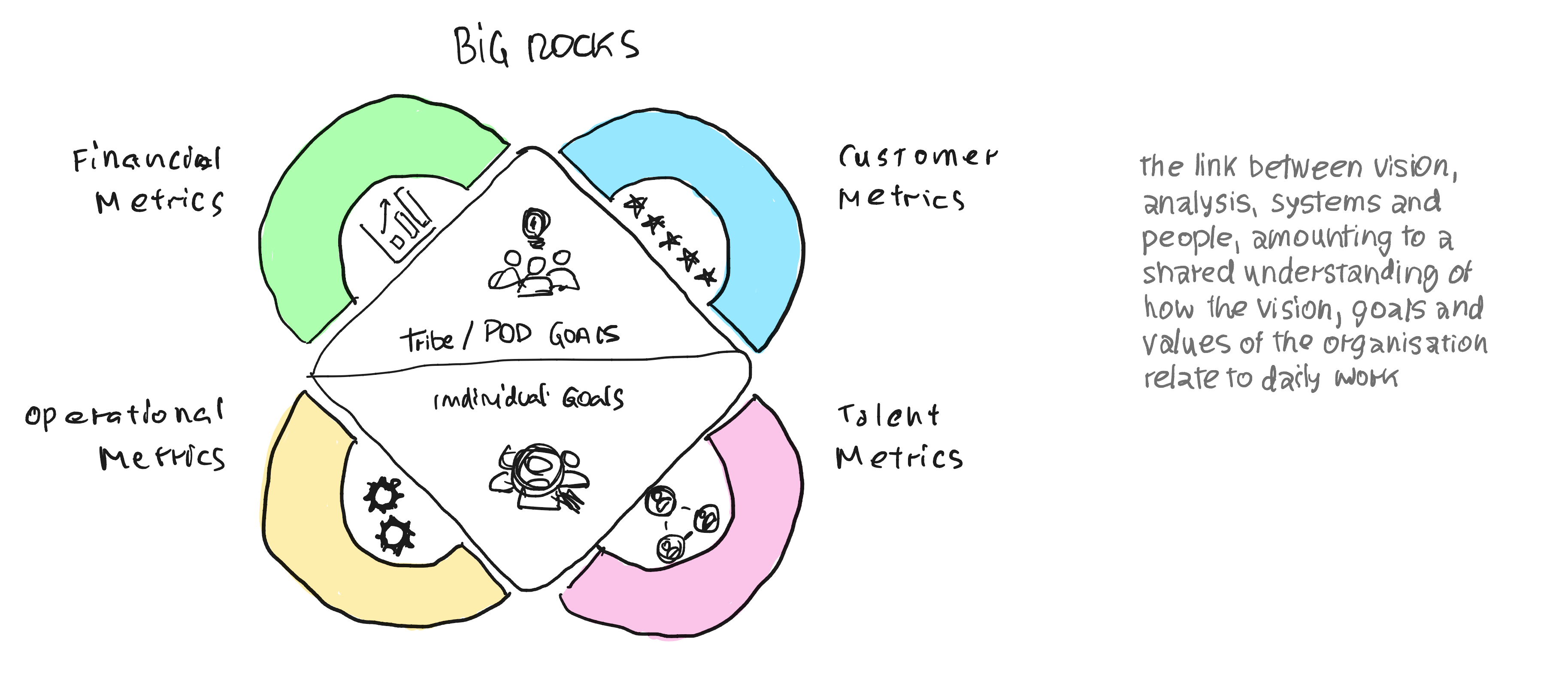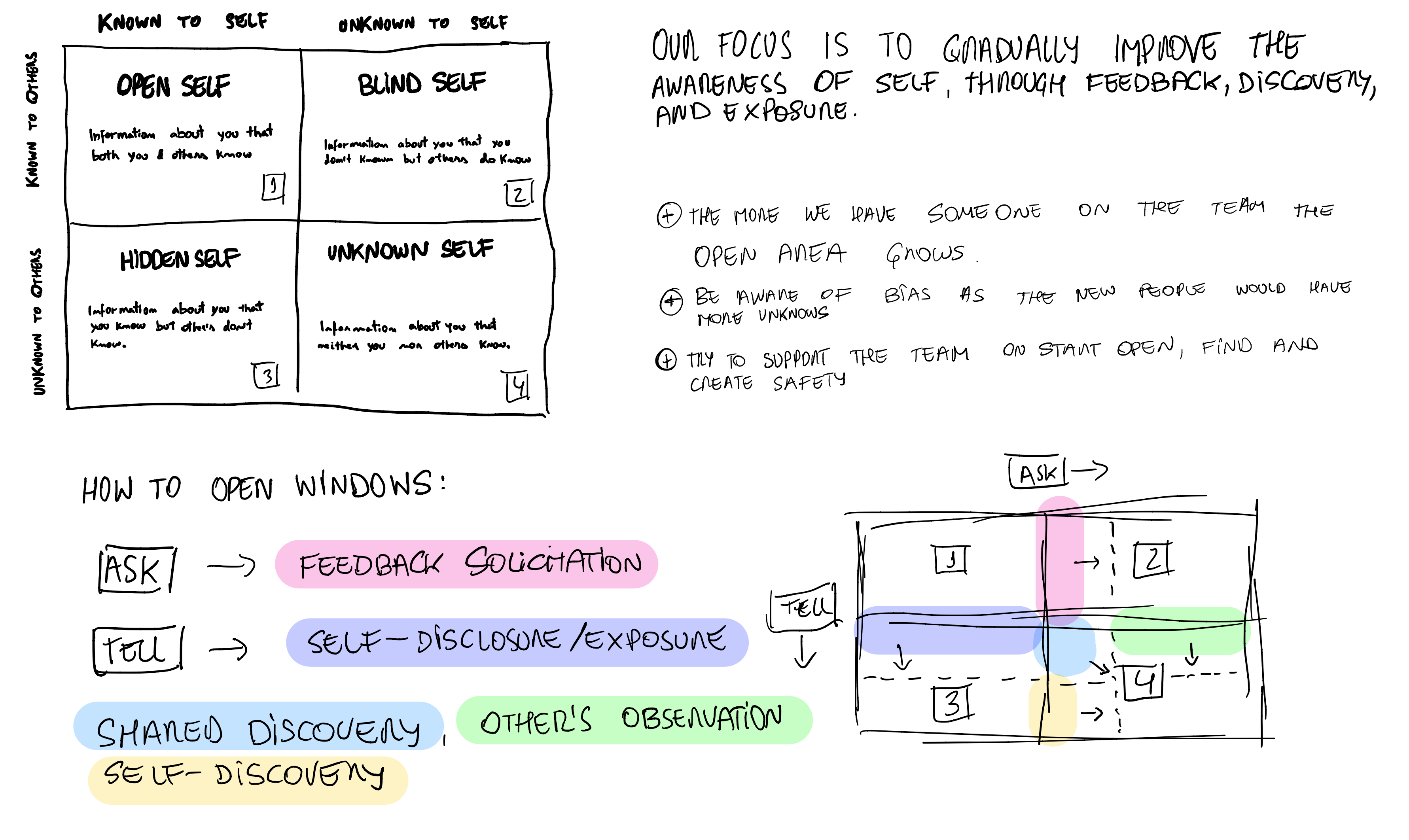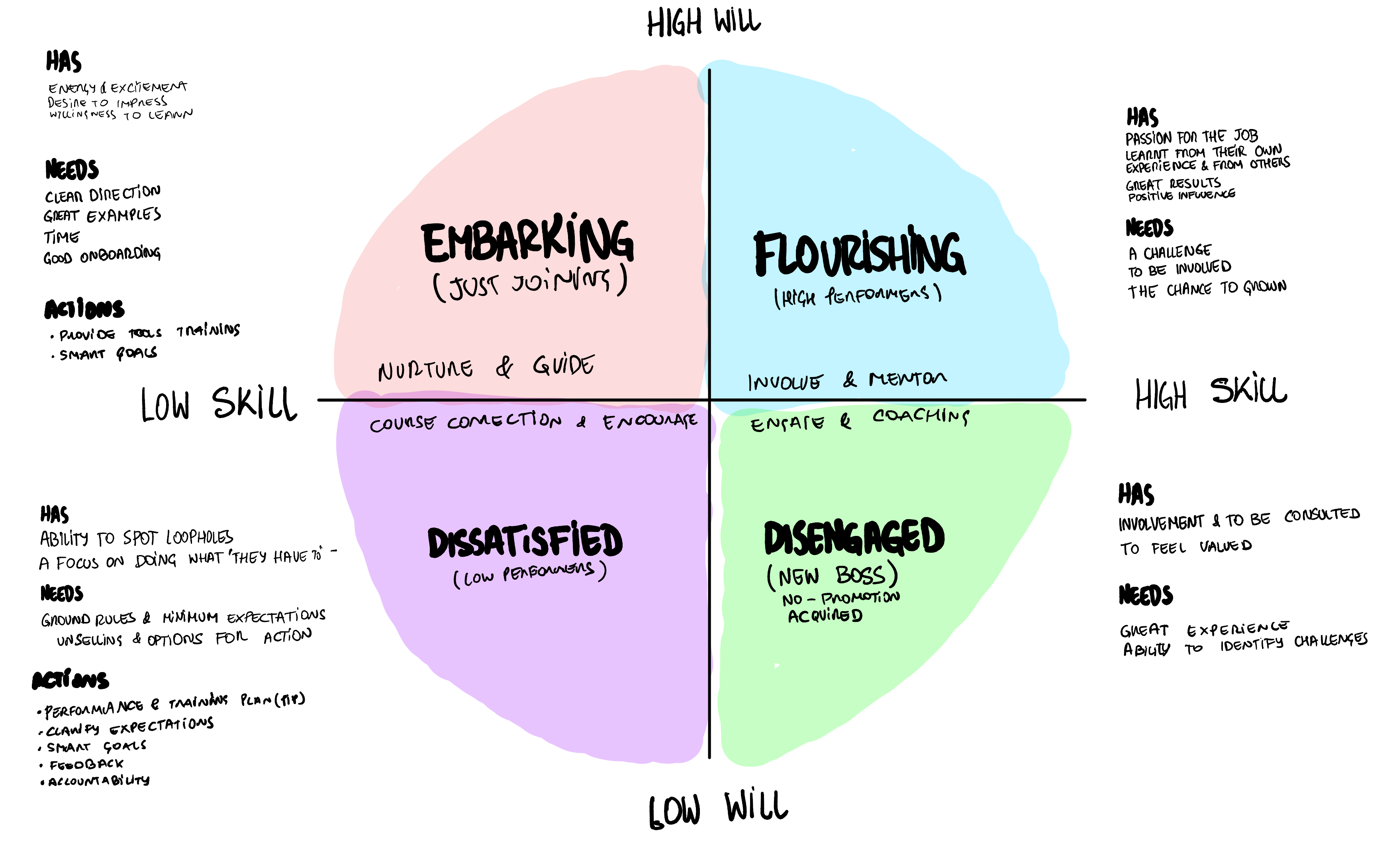1. Why Manage Performance
Performance management is not about metrics or checklists. It’s about creating an ecosystem of growth. When we manage performance, we are investing in people — their clarity, development, and sense of contribution. It’s not an isolated people function. It’s a daily leadership act.
Without thoughtful performance conversations, people are left guessing. Guessing what’s expected. Guessing how they’re doing. Guessing whether their work matters. And in that uncertainty, motivation fades. Confidence wavers. Connection weakens.
Managing performance well means reducing that ambiguity. It means providing regular touchpoints, not just for evaluation, but for reflection and alignment. It means coaching forward, not managing back.
Most importantly, managing performance is about belief. The belief that people can grow. That feedback is a gift. And that a strong team doesn’t just hit goals — it evolves together.
2. The Golden Thread: Aligning Work with Purpose
The Golden Thread is a metaphor, but it’s also a tool. It connects the everyday to the extraordinary. It reminds us that tasks are not isolated — they are part of a broader tapestry of value creation. And when people see how their work connects to company impact, their energy changes.

Leaders must draw that thread clearly. It’s not enough to say, “This is your task.” We must say, “This is why your task matters.” Purpose needs translation. And leaders are the translators.
This requires repetition. And sometimes creativity. But mostly, it requires presence. The ability to see how the backend API update improves the traveler’s experience. How the QA checklist affects trust. How the onboarding flow boosts retention.
When people see the thread, they pull it forward with pride. When they don’t, they unravel.
3. SMART Goals
SMART goals bring structure to intention. Specific, Measurable, Achievable, Relevant, and Time-bound — each component is a check against ambiguity. They force us to think about what we really want to see happen, and how we’ll know when we get there.
Good SMART goals prevent frustration. They create clarity, ownership, and momentum. They also reduce micromanagement because everyone knows what success looks like and how progress is tracked.
But writing SMART goals takes discipline. It’s tempting to settle for vague language. “Improve team collaboration” is not a goal — it’s a wish. A SMART goal would ask: By when? How will we measure collaboration? What behaviors do we expect?
The more specific the goal, the more feedback becomes objective. And when feedback is grounded in something concrete, it becomes easier to accept, reflect on, and act upon.
4. Johari Window Model
The Johari Window gives us a way to visualize self-awareness and relational dynamics. It’s split into four quadrants: open (what both self and others know), blind (what others see, but we don’t), hidden (what we know but haven’t shared), and unknown (yet to be discovered).

Performance development lives in the movement between these spaces. The more we shrink the blind and hidden areas, the more trust and growth can thrive. This is done through honest sharing and active feedback.
In teams, using Johari as a mindset fosters curiosity. It invites us to say, “What do I not know about how I show up?” And, “What does my teammate need to know about me to work better together?”
Feedback, then, isn’t just correction. It’s collaboration. A respectful way of widening our “open area” — together.
5. Understand Your Team’s Needs (Skill vs. Will)
Skill and Will form a matrix that helps leaders coach with nuance. A highly skilled but demotivated teammate needs something different from a novice who is eager but unsure. We must diagnose before we prescribe.

Those who are Embarking need guidance, onboarding, and encouragement. Flourishing teammates need challenges, stretch goals, and autonomy. Dissatisfied team members require empathy and deep listening — often, their disengagement masks unmet needs. And the Disengaged need urgent attention, honest dialogue, and clarity about expectations and consequences.
One size doesn’t fit all. And misreading a situation — offering freedom when someone needs structure, or pressure when someone needs reassurance — can do harm.
This framework doesn’t replace empathy — it organizes it. It invites us to ask, “What does this person really need from me right now?” Not as a manager, but as a partner in their growth.
6. Dare to Lead
Drawing on Brené Brown’s work, we were reminded that clarity is kindness and vulnerability is strength. Managing performance often means walking into uncomfortable conversations — ones that involve truth, emotion, and ambiguity.
Courageous leadership shows up when we say: “Here’s what I see, and here’s what I hope for you.” It’s not about having the perfect words. It’s about showing up with integrity, respect, and belief in the other person’s capacity.
We must also create space for our team to be vulnerable. To admit when they’re lost. To name a mistake. To ask for help. These are not signs of weakness. They’re prerequisites for performance improvement.
To dare to lead is to show up fully — not with answers, but with presence. And to ask others to do the same.
7. Motivation
Motivation is not a switch we flip. It’s a flame we protect. And every flame is different. Some burn on recognition. Others on autonomy. Some need stability. Others crave innovation. Motivation isn’t generic — it’s personal.
Our job as leaders is to notice what fuels each individual. And to protect that fuel. Not through perks or pressure, but through meaningful conversations. Asking, listening, adjusting.
When someone is motivated, their performance follows. But when motivation dims, it’s often invisible — until it’s too late. That’s why regular check-ins matter. That’s why we ask not just what people are doing, but how they feel doing it.
Motivation is the heartbeat of performance. Don’t assume it. Listen for it.
8. Feedback – SBID
SBID offers a structure: Situation, Behavior, Impact, and Development. It helps us speak clearly, kindly, and constructively. It keeps feedback focused on actions, not assumptions.

A good SBID feedback sounds like: “SITUATION: In yesterday’s retro… BEHAVIOR: …you interrupted two teammates. IMPACT: That created tension, and others were hesitant to contribute. DEVELOPMENT: I’d like to see you hold space for everyone to finish before responding.”
It’s not about perfection — it’s about consistency. SBID builds a language of accountability without blame. And when it’s practiced regularly, it lowers defensiveness. It makes feedback a habit, not a surprise.
9. Omio Runway
Runway is our internal performance conversation framework. But more than a tool, it’s a mindset. It exists to structure meaningful reflection — not to judge, but to evolve. Runway reminds us that growth is a shared responsibility.
When Runway is embraced, it becomes a rhythm. A way of checking in on purpose, progress, and potential. It keeps both the individual and the organization aligned.
Used well, Runway shifts performance conversations from pressure to partnership. From awkward to empowering. It helps us all move forward — not just toward goals, but toward better ways of working together.
# Weekly reflection
echo "What feedback did I offer this week, and how did it land?" >> performance_log.txt